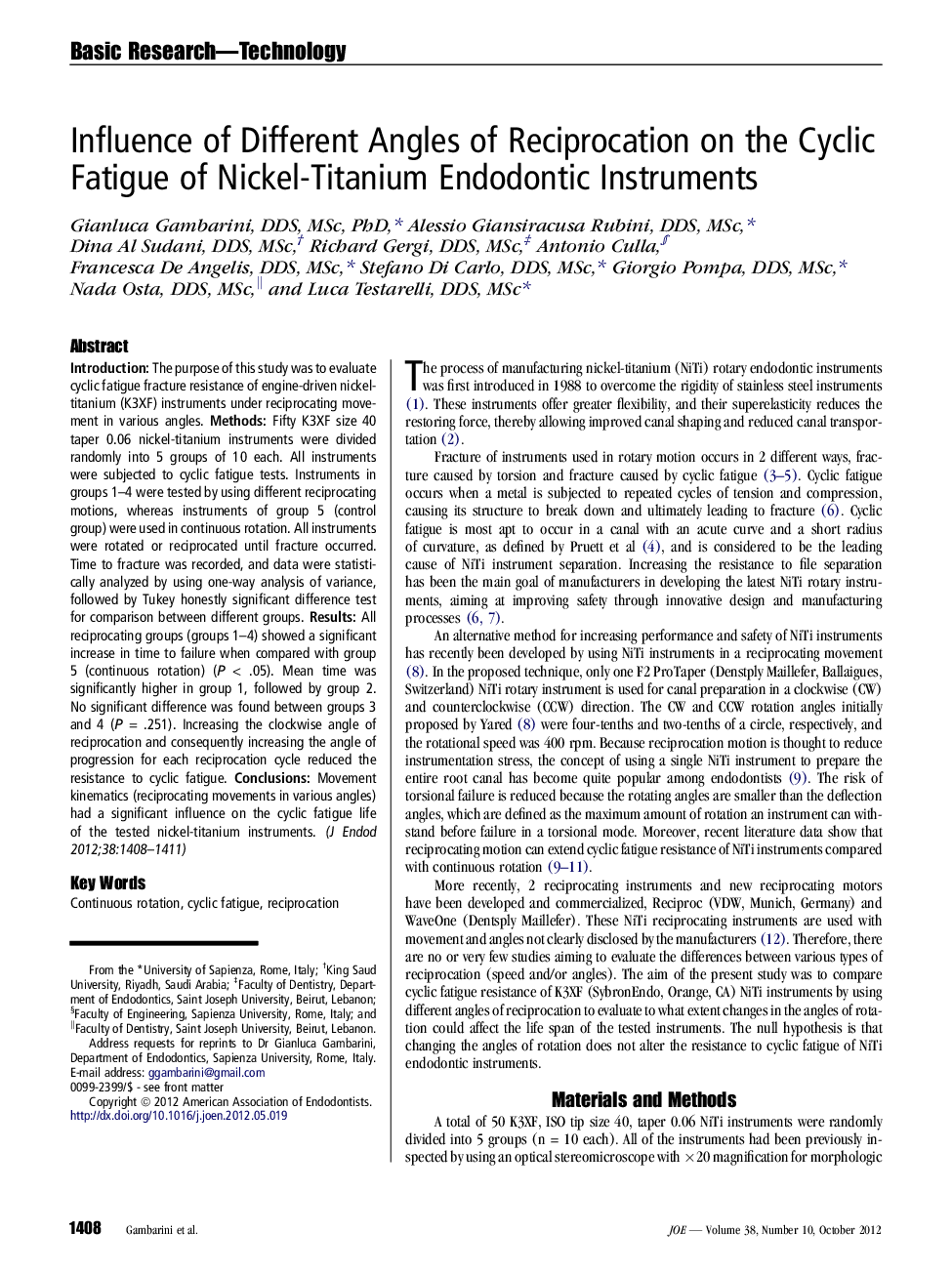| Article ID | Journal | Published Year | Pages | File Type |
|---|---|---|---|---|
| 3148842 | Journal of Endodontics | 2012 | 4 Pages |
IntroductionThe purpose of this study was to evaluate cyclic fatigue fracture resistance of engine-driven nickel-titanium (K3XF) instruments under reciprocating movement in various angles.MethodsFifty K3XF size 40 taper 0.06 nickel-titanium instruments were divided randomly into 5 groups of 10 each. All instruments were subjected to cyclic fatigue tests. Instruments in groups 1–4 were tested by using different reciprocating motions, whereas instruments of group 5 (control group) were used in continuous rotation. All instruments were rotated or reciprocated until fracture occurred. Time to fracture was recorded, and data were statistically analyzed by using one-way analysis of variance, followed by Tukey honestly significant difference test for comparison between different groups.ResultsAll reciprocating groups (groups 1–4) showed a significant increase in time to failure when compared with group 5 (continuous rotation) (P < .05). Mean time was significantly higher in group 1, followed by group 2. No significant difference was found between groups 3 and 4 (P = .251). Increasing the clockwise angle of reciprocation and consequently increasing the angle of progression for each reciprocation cycle reduced the resistance to cyclic fatigue.ConclusionsMovement kinematics (reciprocating movements in various angles) had a significant influence on the cyclic fatigue life of the tested nickel-titanium instruments.
